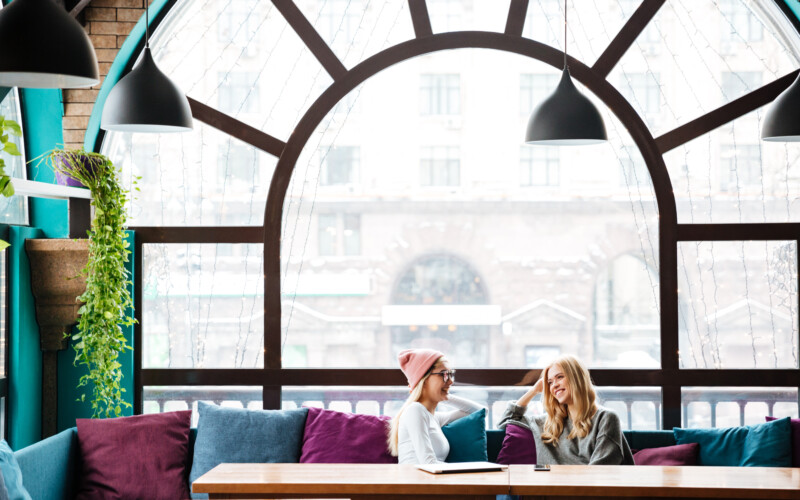
Living in the ‘third place’ – what sounds a little abstract at first glance is a strong, comprehensive living trend with tangible requirements and developments. The term ‘third places’ covers everything that corresponds to one of the core requirements of today’s society and thus to the Zeitgeist: the desire for unlimited mobility, to do whatever one needs or wants to do, wherever one is.
The mobile society lives in the ‘third place’
The first place (your own home) and the second place (your workplace) are losing their importance little by little and the third places, all those places outside one’s own four walls where the mobile society can “do anything, anytime, anywhere”, are slowly overtaking them. Because: mobility and individual development is the current maxim. Train stations, shopping centres, airports, cafes and restaurants, parks: everywhere you can meet, work, live and sometimes even stay overnight (briefly), which is shown by developments such as so-called “sleepboxes”. The third place, the “in-between” is taking up more and more time and space thanks to technical possibilities and also thanks to various airline, hotel or restaurant chain concepts which aim to serve these requirements: “Our worldwide guests consider Starbucks Coffee Houses as their third place, an oasis between home and the workplace”, Starbucks CEO Howard Schultz talks about the “Third Places Trend” and what it means for Starbucks.
Anything, anytime, anywhere
Ones ‘own four walls’, the original first place of one’s own home, is only one building block in the modern world, only ONE possibility in a network of different places that are available and want to be used in today’s society for all activities, both professional and private. The city is increasingly transforming itself into a holistic living landscape and forms the foundation for further trends: coworking spaces, urban gardening, collaborative and intergenerational living, these are essential trends for the future of living and working. With corresponding demands on urban (district) planning, conception of new housing projects and architectural planning.
“I feel at home”
This feeling is not losing importance but it is losing its boundaries. As early as 2013, a study on the “Zukunft des Wohnens” [future of living] (see link below only in German) described the topics of “Entgrenzung und Vernetzung” [dissolution of boundaries and networking] and the need to create design spaces for decentralised lifestyles as THE defining trends for urban development and the basis for a positively rated quality of life. Whether its offerings such as outdoor kitchens for cooking parties, living room like lounges/
Third Place Living offers attractive design spaces that are integrated into the ever-changing everyday life of the urban individualist, transforming decentralised existing into ‘living’. After all, our time is characterised by “to go” and “on the run”. The in-between of the third place thus takes on a central importance – an outsourced, flexible “like-home” feeling.
The collective ‘I’
“The new ‘residential landscapes’ in the cities are adapted to the changed needs of a mobile, spontaneous and above all individualised society. They combine switching off and adventure, retreat and strolling space – at all times,” according to the findings of the Zukunftsinstitut in the residential study: “Abschalten, Austauschen, „Alleinsam“-Sein.” [Switching off, sharing, being alone].
Holistic urban development projects and new, contemporary housing projects must take these trends and requirements into account. Flexibility, decentralisation and much more are giving rise to completely new facilities, forcing new perspectives in construction, planning and implementation, right through to the tenant-owner structure. An example of how WEGRAZ is dealing with these requirements is being built at Bachweg in Graz https:/
Mobility, flexibility, public and shared spaces are already the focus of planning here, in order to unite the most diverse requirements for a modern lifestyle and to create synergies for future coexistence.
Study: Zukunft des Wohnens | Christiane Varga, Adeline Seidel, Christof Lanzinger, Harry Gatterer | March 2013 | 115 Pages | ISBN: 978-3-938284-72-8